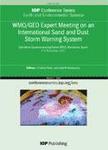版权所有:内蒙古大学图书馆 技术提供:维普资讯• 智图
内蒙古自治区呼和浩特市赛罕区大学西街235号 邮编: 010021

作者机构:Environmental Engineering Department Universitas Pembangunan Nasional Veteran Yogyakarta Indonesia. Disaster Management Master Study Program Universitas Pembangunan Nasional Veteran Yogyakarta Indonesia. Management Department Universitas Pembangunan Nasional Veteran Yogyakarta Indonesia.
出 版 物:《IOP Conference Series: Earth and Environmental Science》
年 卷 期:2018年第212卷第1期
摘 要:Mangrove is one of the most pivotal of coastal ecosystems. In this study, Kulonprogo coastal area is considered in the analysis of mangrove ecotourism management. Kulonprogo coastal area is located in the tsunami prone area. Due to rapid population growth, thousands of people are currently believed to be exposed to the danger of tsunami hazard, since they live in the proximity of southern coastal. It also implies that these people are potential victims, hence the existence of mangrove ecosystems can be used as tsunami barrier and reduce the impact when disaster strikes. In order to maintain the existence of mangroves and its important ecological functions, then it is crucial to have an appropriate conservation strategy for mangrove ecosystems as well as to integrate the conservation effort with the element of education and economic. Mangrove ecotourism is one of the best strategy to conserve mangrove, provide education as well as increase prosperity of the community. For this purpose, this study proposes an Analytic Hierarchy Process (AHP) as an effective platform to investigate the management strategy of mangrove ecotourism. Hierarchical synthesis is obtained from the process of weighting by paired comparison based on expert judgments. In-depth interview survey to key person in mangrove ecotourism was used in this study. There were several main elements of mangrove ecotourism in Jangkaran, Kulonprogo Regency, i.e. the potency of mangrove ecotourism; facilities and infrastructure of mangrove ecotourism; access to mangrove ecotourism locations and institutional management of mangrove ecotourism. The results showed that the highest and lowest value of main element were institutional management of mangrove ecotourism (0.36) and access to mangrove ecotourism locations (0.14). Each main element of mangrove ecotourism is divided into several sub-elements. The three sub-elements with highest value were Management Capacity of Human Resources (0.107), Natural Zonation of Man